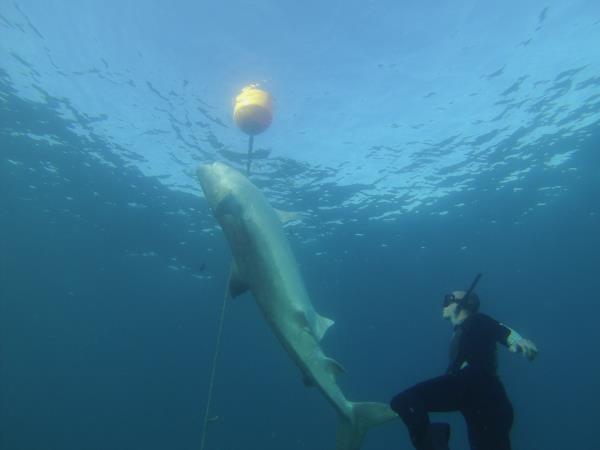By JOLENE OGLE
A SHARK sighting at Noosa Main Beach on Saturday saw the waters cleared and life-savers spring into action to patrol the popular swimming spot.
No-one was injured and swimmers soon returned to the ocean once the life-savers gave the all-clear.
Speaking with Noosa Today, University of Queensland Professor Mike Bennett, who specialises in the study of sharks along Queensland’s coast, said if anyone wanted to see a shark then Noosa was the place to be.
“There are always going to be sharks in Noosa,” he said.
“If you want to see a shark, go to Noosa. There are always tiger sharks around, many of which just keep to themselves.”
Professor Bennett said many people thought the nets and drum lines were used to provide a protective barrier between sharks and swimmers, but he said they had “zero effect” when it came to protecting swimmers.
“The point I would make about the drum lines off Noosa is their catch rate is not high, considering how many sharks there are around,” he said.
According to the Queensland Shark Control Program, there are 26 drum lines in use along the coast from Noosa to just south of Yaroomba, with two shark nets located off Noosa Main Beach and one off Coolum beach.
Professor Bennett said the nets and drum lines weren’t designed to provide a protective barrier for swimmers – rather they were active fishing devices to reduce the number of sharks in coastal waters.
“Most of the sharks caught in the shark nets are on the beach side of the net,” he said.
“In other words, they’re already closer to the beach and they seem to be caught when they’re swimming away.”
But there is no need to steer clear of the beach with the risk of a negative interaction between humans and a shark labelled as extremely rare, according to Professor Bennett.
“(For an attack to occur) you need a shark in the water, presumably either seeking food or it might just be in the wrong place at the wrong time and be surprised or spooked by a human,” he said.
“Invariably there will be interactions between humans and sharks. Very rarely so though, considering the number of sharks and the numbers of humans in the water at any given time.
“The common call is that sharks are under much greater threat from humans than humans are from sharks.”
Professor Bennett said the removal of the shark nets and drum lines all came down to politics.
“It is a political risk removing the lines and nets,” he said.
“Woe betide the politician who makes the decision to remove the drum lines or nets and then a week later somebody has an interaction with a shark.
“The interaction may well have happened if the nets had remained in place, but the public perception will not always take that view.”









